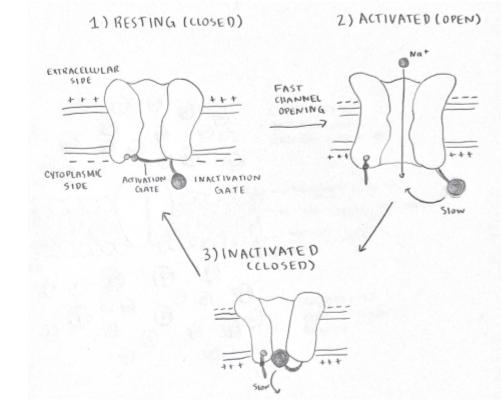
Voltage-gated ion channels are a type of ion channel that open or close in response to changes in the electrical potential (voltage) across the membrane. These channels are essential for generating and propagating electrical signals in neurons, such as the action potential, and play a crucial role in excitable cells like muscle and nerve cells.
Voltage-gated ion channels are proteins embedded in the cell membrane. They have two key gates: the activation gate and the deactivation (inactivation) gate. The activation gate responds to changes in membrane potential (probabilistically), and the deactivation gate ensures that the channel closes at the appropriate time.
When the membrane depolarizes to a certain threshold, the activation gate opens, allowing specific ions (such as sodium, potassium, or calcium) to flow through the channel. After a brief period, the deactivation gate closes to stop ion flow and return the channel to its resting state.
Here’s a general breakdown of their function:
This coordinated action between the activation and deactivation gates is crucial for the rapid and precise transmission of electrical signals in neurons.
In addition to voltage-gated ion channels, several other types of ion channels play important roles in cellular signaling: